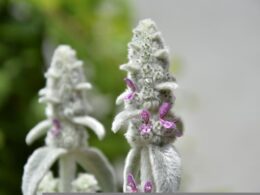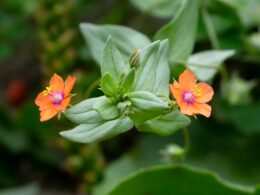Straw Flowers (Xerochrysum Bracteatum) Appearance
Also known as Bracteantha bracteata, straw flowers are native to Australia. The flower heads, which bloom throughout the year in bright golden yellow or white, have delicate papery bracts that resemble petals. The flowers are typically 2-3 inches in diameter and have a button-like center. The plants themselves are usually 2 to 3 feet tall and have fuzzy, silver-green leaves. Straw flowers are relatively easy to care for and make excellent cut flowers.
Strawflowers Care
The straw flower is a hardy annual or perennial that is native to Australia. With its cheery yellow blossoms, it is a popular choice for adding color to summer gardens. Straw flowers are easy to care for and will bloom from early summer until fall. They are also heat and drought tolerant, making them ideal for growing in hot, dry climates.
Soil
Straw flowers prefer a well-drained, sandy soil. If your soil is heavy or clay-like, mix in some sand or organic matter to help improve drainage. Sandy and rocky soils with a slightly acidic to neutral pH (5.5 to 6.5) are better than rich and heavy soils, but any soil will do as long as good drainage is available.
Watering
Straw flowers are drought tolerant and do not need a lot of water. In fact, too much water can cause the plants to rot. Water only when the soil is dry to the touch, and always allow the soil to drain well after watering.
Temperature
Straw flowers are heat-loving plants and prefer warm temperatures. They will do well in USDA hardiness zones 8 through 11. In cooler zones, they can be grown as annuals. Straw flowers need full sun to partial shade. They will do best in an area that receives at least 6 hours of direct sunlight per day.
Deadheading Strawflowers
While deadheading is not necessary for all plants, it can be beneficial for straw flowers. Deadheading the flowers will help to keep the plant looking tidy and may encourage additional blooming. To deadhead a straw flower, simply snip off the flower at the base of the stem. New buds should begin to form within a few weeks. Strawflower seed heads can be used in dried arrangements. The blooms do not fade, and the color is long-lasting.
Can Straw Flowers Be Grown Indoors?
Although straw flowers are typically associated with outdoor gardens, they can also be successfully grown indoors. These cheerful blooms add a touch of color to any room and are relatively easy to care for. Straw flowers prefer bright, light and well-drained soil.
Straw Flower Companion Plants
While straw flowers can be grown alone, they also make beautiful companions for other plants. Black-eyed Susans, balloon flowers, bee balm, and yarrow all make lovely partners for straw flowers. These companions share similar growing requirements and will provide complementary color and texture to the garden.
How to Grow Strawflowers? Straw Flowers Growing Conditions
If you’re looking for a bright, cheerful addition to your garden, straw flowers are an excellent choice. With their large, daisy-like blooms, they add a splash of color to any space. And best of all, they’re easy to grow! Here’s what you need to know about growing straw flowers.
Choose a Sunny Spot
First, choose a sunny spot in your garden. Straw flowers need full sun in order to thrive. Once you’ve selected the perfect spot, prepare the soil by loosening it with a spade or tiller. Then, simply sow the seeds and cover them with a thin layer of soil. Water regularly until the seedlings emerge.
Water Regularly
Once the seedlings have sprouted, thin them out so that they’re spaced about 12 inches apart. Then continue to water them regularly and fertilize them if needed. Fertilizing is not necessary, if the soil is good. In summer, you’ll start to see the first flowers blooming. Cut them back periodically to encourage new growth. With just a little care and attention, you’ll have a beautiful garden full of lovely straw flowers.
Strawflower Care: Pests and Diseases
While strawflowers are generally quite resistant to pests and diseases, there is one issue that they are particularly susceptible to: powdery mildew. Powdery mildew is a type of fungus that attacks the leaves of plants, causing them to become covered in a white or gray powder. While this may not seem like much of a problem at first, powdery mildew can quickly spread and weaken the plant, eventually leading to its death.
How to Prevent Straw Flowers From Diseases
The best way to prevent powdery mildew is to water the plants early in the day so that the leaves have time to dry before nightfall. Additionally, it is important to space out the plants so that they have good air circulation. If powdery mildew does appear, it can be treated with a fungicide. However, it is important to catch it early, as fungicides are more effective when applied at the first sign of infection.



















